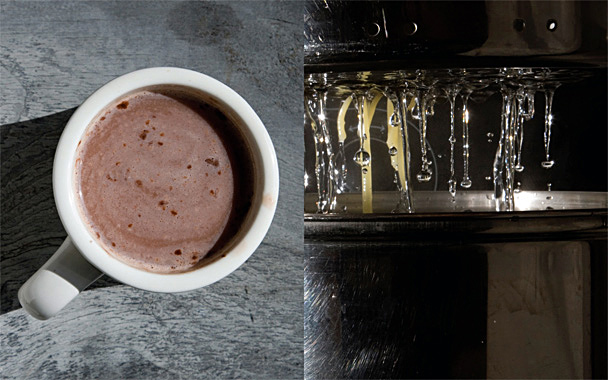After backpacking 15 miles in the cold, you wouldn’t think that we’d want to throw any food away. But there we were, standing around our tinny pot of pasta water, wondering how to get rid of it. There were bears to think about. Bears can smell food from two miles away, and while they are cute, they are less so when they are tearing you limb from limb wondering where you hid their bowl of macaroni.
We deliberated in silence. A friend pulled out a packet of hot cocoa and reached for the pot. She took a look at the cloudy murk, thick from cooking noodles in three cups of water for six people. She grew pale, lost heart, and set her mug back down. “Oh hell,” I said. “At least I’ll get a few more calories out of the deal.” I put the pot to my lips and felt like a hero, the King of Nose-to-Tail Eating. It’s one thing to feel virtuous because you eat tripe, and another thing entirely to drink pasta glue.
But you know what? It actually wasn’t half bad. It tasted—shocker!—like pasta, which has a flavor I enjoy.
I’m remembering this as I think about stock. Because what is stock, really, but a way of getting flavor out of the scraps you’re going to throw away anyway?
Sure, stock made with precise recipes and well-considered flavor combinations is great. The classic veal stock they taught me in culinary school involves 12 hours of cooking; Cook’s Illustrated has a recipe for vegetable stock that has like 89 ingredients (surprisingly none of them a roasted chicken). But often while I’m cooking I replay the lesson from that camping pot: If you cook something in water, that water is going to have flavor. It’s like an incidental stock. Why not put it to use?
Last week, as I was making koshary, Christine boiled carrots for a lovely purée. She got out her colander, and I asked her to save the water for me. It wasn’t amazing—kind of sweet, a pale flavor of carrot. But it was better, for sure, than nothing. I cooked my lentils in it, and in turn saved that cooking water. By now it was sugary and nutty and earthy, and it was awesome in my pot of braised greens, giving it rich body and intriguing depth.
Of course, I don’t save every pot of water I heat up—it’s not like I have a ton of tricks with pasta water. And sometimes cooking leaches out overly strong or gnarly flavors. But whenever you find yourself boiling something, give the water a taste. Is it pleasant? If so, even a little bit, think about how you might reinsert that flavor into your meal. You can reduce it and add it to the sauce you have bubbling in your other pot. You can cook something else in it. Get creative. So much of good cooking is about harnessing and building layers of flavor. Why throw any of it down the drain?




 Pinterest
Pinterest


